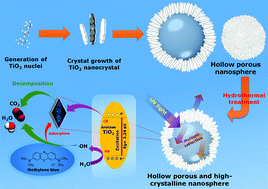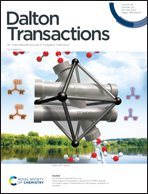Formation of hollow porous TiO2 nanospheres via the encapsulation of CO2 nanobubbles for high-performance adsorption and photocatalysis†
Abstract
Porous TiO2 structures have been of great interest in various photocatalytic applications over the past decade. However, the synthetic methods reported so far in the literature are complex and time consuming. This study presents a simple one-pot fabrication method of hollow porous TiO2 nanospheres using a sol–gel process involving CO2 generation in aqueous solution. The CO2 nanobubbles produced in the reaction act as a template for the crystal growth of TiO2 resulting in highly porous hollow nanospheres. The unique nanocrystal structure with a hollow nanosphere centre surrounded by an outer shell of prickle-like porous nanocrystals was observed. The prepared hollow porous TiO2 nanospheres exhibited excellent adsorption properties as demonstrated by the adsorption measurements and dynamic extraction of methylene blue in aqueous solution. Furthermore, the hollow porous TiO2 nanospheres hydrothermally treated at 180 °C exhibit 3.2 times higher photocatalytic performance in the decomposition of methylene blue than the commercial P25 TiO2. The idea of this work provides a new direction for facile green synthesis routes of various metal oxides with cavities, channels or crevices for various technological applications.



 Please wait while we load your content...
Please wait while we load your content...